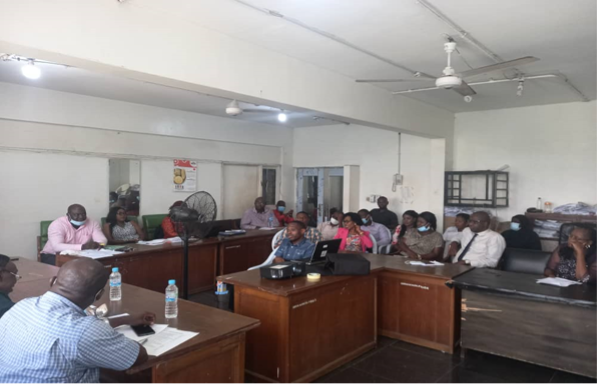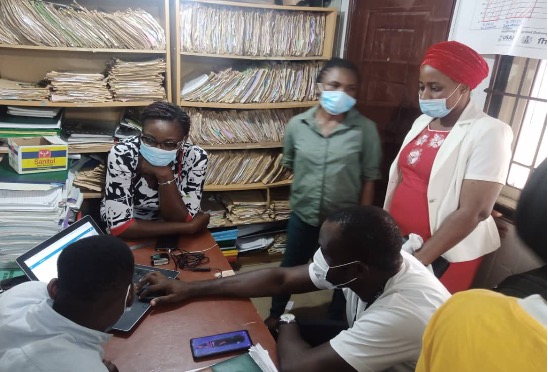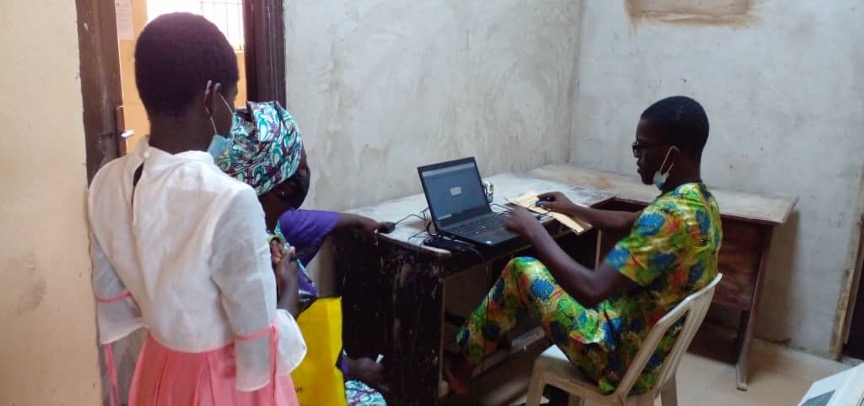Project Description
Meeting Targets and Maintaining Epidemic Control (EPIC) project provides strategic technical assistance (T.A.) and direct service delivery (DSD) to advance break through barriers to 95-95-95 and improve HIV case finding, prevention, treatment programming, and viral load suppression. The project is funded by U.S. Presidents’ Emergency Fund for AIDS Relief (PEPFAR) through the U.S. Agency for International Development (USAID) and implemented by a consortium led by FHI360. A core project objective is to increase access to integrated high-quality, comprehensive HIV/AIDS and T.B. prevention, treatment, and care services delivery.
As part of its comprehensive and integrated HIV response, EPiC facilitated the rollout of biometric enrollment of people living with HIV to establish efficient systems of client identification to improve program planning and budgeting. This brief document, draws important lessons for the broader effort towards integrated data systems for improved HIV prevention, care, and treatment.
The Challenge
Current patient identification procedures in Nigeria requires the patient’s name, D.O.B, house address and phone number. However, these identifiers are often inaccurate in the Nigerian context, as data systems are still evolving and often inadequate to confirm identity. An effect of this on HIV programs is that it limits accurate patient identification and classification, which can lead to poorer health outcomes and inefficient resource allocation. In addition, HIV programs are being constrained to accurately capture the continuity of care for people living with HIV (PLHIV) as it is impossible to follow and document continuity of care across service delivery points and outlets.
Support for biometric linked electronic medical records has grown as a potential solution to overcome these challenges in Nigeria. Potential advantages offered by biometric registration among PLHIV include strengthening continuity of care, linking and integrating data to strengthen the current fragmented data systems, improving the flow of information across the general health system, thereby enhancing the quality, comprehensiveness, and continuity of HIV-specific services. Simply put, it can help improve operational challenges to guide resource allocation and priority setting

Operational context
In response to donor demand for improved biometric enrollment coverage, EPIC piloted this biometric capture for enrolled PLHIV starting with a high-volume facility, Benin Central Hospital in Edo state, which is the largest comprehensive HIV facility on the EPIC project, with 7,199 PLHIV currently in care as of 31st January 2022.
EPIC technical approach
Early September 2021, EPIC commenced a set of multicomponent activities to kick off biometric enrollment.
Robust Stakeholder Engagement: Stakeholder engagement was conducted to get the buy-in of multiple stakeholders around biometric enrollment. Advocacy visits were carried out to State AIDS and STI Control Program (SASCP) Lead and State Implementation Team (SIT), various Hospital Management Teams, and patient groups, including Network of People Living with HIV (NEPHWAN). The visits were important to address sensitive issues around privacy and data confidentiality.
Demand Creation and Client Mobilization: Following stakeholder engagement, EPIC commenced awareness to drive up acceptance and demand for biometric enrollment. This was done through routine Health Talks at the ART Clinic, Support Group Meetings and Health Management Team Meetings in the state. Part of the demand creation involved client profiling to identify gaps in enrollment and the generation lists of potential enrollees which were shared among the Client Experience Associates (CEAs) for active tracking.
Resource Mobilization and Incentivized Biometric Enrollment: Information gathering from client profiling and active tracking revealed a significant number of clients without active phone numbers who could not be tracked. To overcome these challenges, EPIC provided tablets to support biometric enrollment within these communities and transport support for clients willing to come into the facility for their biometric enrollment.
Training and capacity building: EPIC conducted onsite training for data entry staff, following a protocol that included a didactic component, post-test assessment, practical component, and practical skills assessment. The training included a description of the protocol for approaching clients for biometric data collection, including principles of voluntariness, privacy, and confidentiality.


Results
Daily Reporting and Monitoring of Progress: A reporting system was set up to submit and review progress in the coverage for biometric enrollment. As of 31st January 2022, Benin Central Hospital had biometrically enrolled 6,049 clients out of 7,199 PLHIV currently receiving care, translating to an 84% biometric enrollment coverage.
Challenges
Challenges were encountered with false positive (1/1000) and false negative (1/10,000) match rate, which may cause misclassification of patient data. To eliminate this problem, security questions such as year of birth, gender, and father’s name were considered for the data input system to facilitate confirmation of matching without compromising identity.
Enrollment within rural settings communities with poor mobile connectivity posed challenges to implementation feasibility. However, initial resistance encountered in these community settings subsided due to increased awareness provided with the support of NEPHWAN and Support Group Meetings (Due to the active mobilization conducted, patients who chose to come to the facility experienced increased wait times during biometric enrollment.) Mass mobilization led to increased wait time by patients who came to the facilities, but this was overcome by task sharing and fast track processes.
Lessons Learned
The Central Hospital Benin experience indicated that biometric enrollment is feasible in low-middle income settings like Nigeria, using a combination of community and facility optimization approaches. Robust stakeholder engagement and strong community support are key to success of the process.



